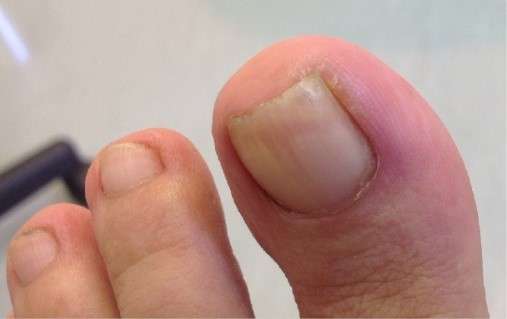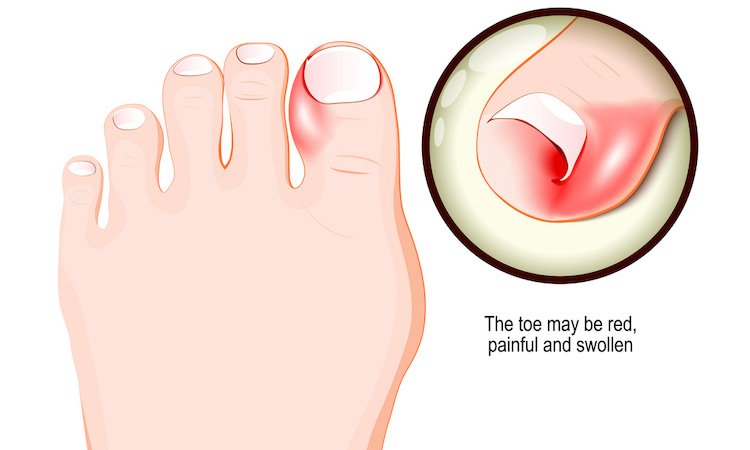
Ingrown toenails are painful, irritated, and tender to the touch. To relieve this problem, you should soak your foot in warm water with a cotton bud and Epsom’s salt. If possible, wear shoes that are roomy and allow your toes to move. If symptoms do not subside within a few days, you should see a doctor. If you don’t notice any improvement, you can try the home treatments listed below.
The first step in preventing an ingrown toenail is to make sure that you have the proper footwear. It is best to wear comfortable socks and shoes with a wide toe box. You should also wear sturdy shoes. Steel-toed boots are an excellent choice for people with ingrown toenails. A combination of the two may help prevent an infection. But a surgical procedure should be the first option.
Treatment for ingrown toenail may involve surgery. The underlying nail matrix is removed to relieve the pressure on the ingrown nail. A laser or chemical called phenol is used to destroy the ingrowing toenail cells. If you have a serious infection, a doctor may recommend antibiotic cream or surgical removal. After a surgical procedure, you should wear soft shoes for at least two weeks. If you have a bacterial infection, you may have to wear closed-toed shoes or sandals for another two weeks to avoid risking another one. Ingrowing toenails are common in women and men, and you should not ignore them.
Ingrown toenails can be treated at home. Ingrown toenail treatment can include soaking your foot in warm water and applying petroleum jelly. Moreover, a bandage will help to relieve pressure and pain. Toenail surgery can be an option if you are unable to remove the entire ingrown toenail on your own. However, it is important to note that this method may not be right for everyone as it exposes the nail bed.
Ingrown toenail treatment can be performed through a laser or with a chemical called phenol. After the treatment, you should wear soft shoes or sandals to avoid infections. You should also keep your toenail clean and dry. Toenail treatments may result in bleeding and a secondary infection. The pain and discomfort caused by ingrown toenails is temporary and the ingrown toenail is unlikely to return.

Home treatment of an ingrown toenail is simple and effective. The most common home remedy involves soaking the affected area in warm water with a cotton ball and disinfectant. You should also wear soft shoes or open-toed sandals for several weeks after the treatment to prevent the infection. Afterwards, you should keep the ingrown toenail clean and dry to avoid infection. Ingrown toenail treatment is not an easy procedure, so make sure you do not miss it.
A home remedy for an ingrown toenail is to soak the foot in warm saltwater to alleviate the pain. If the ingrown toenail is deep enough, it can become infected. Your doctor may prescribe antibiotics to treat the infection. But you should also consult your physician before using any of these methods. A doctor will examine the affected foot and determine the best course of treatment. It is important to keep the ingrown toenail clean to avoid infection.
If you suspect you have an ingrown toenail, it’s important to see a doctor for a diagnosis and for more information about treatment and prevention at the site ticketbox.co.th. An ingrown toenail can be painful and infected. A professional can remove the ingrown toenail and treat the underlying nail bed. The ingrown toenail may also ooze yellow or pus. If pus is present, it should be treated as soon as possible.
A doctor can treat an ingrown toenail at home. You should soak your feet in warm water for several hours to reduce swelling and reduce soreness. In addition to applying antibiotic creams, bandages should also be used to bandage the ingrown toenail. Home treatment can help you avoid the need for x-rays. The doctor may also perform laser treatment to kill the ingrown toenail and prevent infection.
Often, it is possible to treat an ingrown toenail with home remedies. However, it is recommended that you avoid home remedies if you have any serious health conditions. Never try to cut your toenail yourself, as it may result in further damage and inflammation. Instead, you should visit a professional. If the ingrown toenail is severe or irritated, seek medical advice.